Last updated on March 19, 2024

Sunken Citadel | Illustration by Matteo Bassini
Parents: Get your kids some books. Or an e-reader. Or a library card. Just get your kids reading, because it’s the easiest way to transport them to other worlds without leaving home. How else would I have learned the word “spelunking” as a child?
Speaking of, The Lost Caverns of Ixalan (LCI) invites us to do our own caving (land) and cave diving (water), quite literally! Caves have joined the Magic world as a land type, but what do they bring to the gaming table? I’m not, nor have I ever been a Magic judge, but I hope to light your way through these cave cards.
LCI gave us just over half a dozen caves to explore, and I don’t think Fifty Feet of Rope will be enough…. Without further ado, let’s, uh, dive right in.
How Do Caves Work in Magic?

Hidden Courtyard | Illustration by Josu Solano
Caves are a nonbasic land type in Magic. No, they do not produce purple mana.
They’re utility lands, but they don’t have a specific linking mechanical identity. There is, however, a cycle of mono-color lands that can be sacrificed to discover 4 at sorcery speed. There are also four caves that are on the reverse side of transforming permanents.
There’s also a few cards that mention caves in their rules text, namely:
- Bat Colony
- Calamitous Cave-In
- Compass Gnome
- Cosmium Confluence
- Glimpse the Core
- Gargantuan Leech
- Kaslem's Stonetree / Kaslem's Strider
- Scampering Surveyor
- Sinuous Benthisaur
- Spelunking
The History of Caves in Magic
Caves are a land type in Magic introduced in 2023’s The Lost Caverns of Ixalan. This set gave us 18 cards that have the cave land type, although there had been cards previously that were named Caves or Caverns.
Caves and Caverns Before The Lost Caverns of Ixalan
Cave-flavored cards from previous sets aren’t currently being errata’d to have the cave subtype, and there’s no plan to do so.
Here’s a list of lands that are not caves despite their name.
- Bloodfell Caves
- Cave of Temptation
- Cave of the Frost Dragon
- Caves of Koilos
- Cryptic Caves
- Dromar's Cavern
- Forgotten Cave
- Gemstone Caverns
- Pelakka Predation / Pelakka Caverns
- Rhystic Cave
- Spikefield Hazard / Spikefield Cave
- Waterveil Cavern
- Zoetic Cavern
And just to make things more confusing, LCI also reprinted Cavern of Souls, which is, you guessed it, not a cave. It does have Neon Ink printings, though.
Why Are Caves Good?
Caves are good because of the cards that play well with them. First in line is Forgotten Monument, since it turns all of your other caves into painful forms of color fixing.
Hidden Courtyard, Hidden Cataract, Hidden Necropolis, Hidden Nursery, and Hidden Volcano make up a cycle of mono-colored caves that all give you an option to sacrifice them to discover 4.
Descend is a whole mechanic that cares about permanents you own going to the graveyard, and caves that have a sacrifice ability give you another way to get some permanents in there.
I think the extra neat part is how a few of the cave-specific payoffs like Calamitous Cave-In care about the caves you have in your graveyard as well as on the field, so it’s unlikely that your cave is entirely useless if you’ve used it to discover something.
There’s also a few standout caves that don’t need other caves to be good, like the copy ability on Echoing Deeps and Sunken Citadel’s cost reduction for activating other lands’ abilities.
Caves have a couple limitations, firstly that many of them come in tapped (but you can get around that with Spelunking). They don’t have a basic land type, so they’re only fetchable by effects that grab any land, nonbasic lands, or caves themselves.
What Are the Odds of Opening a Cave Card?
Per Wizards’ own guide to collecting LCI, caves appear in the land slot of Draft and Set boosters 70% of the time.
Predicting Collector Boosters is trickier since we only get the breakdown by rarity, but we know that none of the caves are mythic, so they can “only” appear in the common (7 possible caves), uncommon (7), and rare (4) slots of Collector Boosters.
How Many Caves Should You Play in Limited?
I’m no Limited expert, but I think caves could be a big role-player (it’s in the set’s name, after all). The cycle of Hidden lands should see some play, and overall I think you’ll probably have 1-2 caves in your deck, minimum.
Keep in mind that this is a set where your graveyard matters. Descend cares about permanents you own going to or simply being in the graveyard, including your lands. Sacrificing a Hidden land or a Promising Vein can help you get that end step descend payoff. If you’re making descend a core part of your strategy, you’ll want as many as you can tolerate since most come in tapped.
You may even try to go all-in on caves, just like you might with gates. It’s a choice. Let me know how it goes? It looks like it could be really fun, but I don’t know if it’s real or if it’s the jank in me that’s reacting here.
Gallery and List of Cave Cards
- Brass's Tunnel-Grinder / Tecutlan, the Searing Rift
- Captivating Cave
- Cavernous Maw
- Dowsing Device / Geode Grotto
- Echoing Deeps
- Forgotten Monument
- Grasping Shadows / Shadows' Lair
- Hidden Courtyard
- Hidden Cataract
- Hidden Necropolis
- Hidden Nursery
- Hidden Volcano
- Pit of Offerings
- Promising Vein
- Sunken Citadel
- Tarrian's Journal / The Tomb of Aclazotz
- Twists and Turns / Mycoid Maze
- Volatile Fault
Best Cave Cards
As a land that can copy other lands in any graveyard, Echoing Deeps feels like it’s going to be popular. Sunken Citadel looks great for using with other utility lands, and it’s not restricted to only helping with your cave abilities, either.
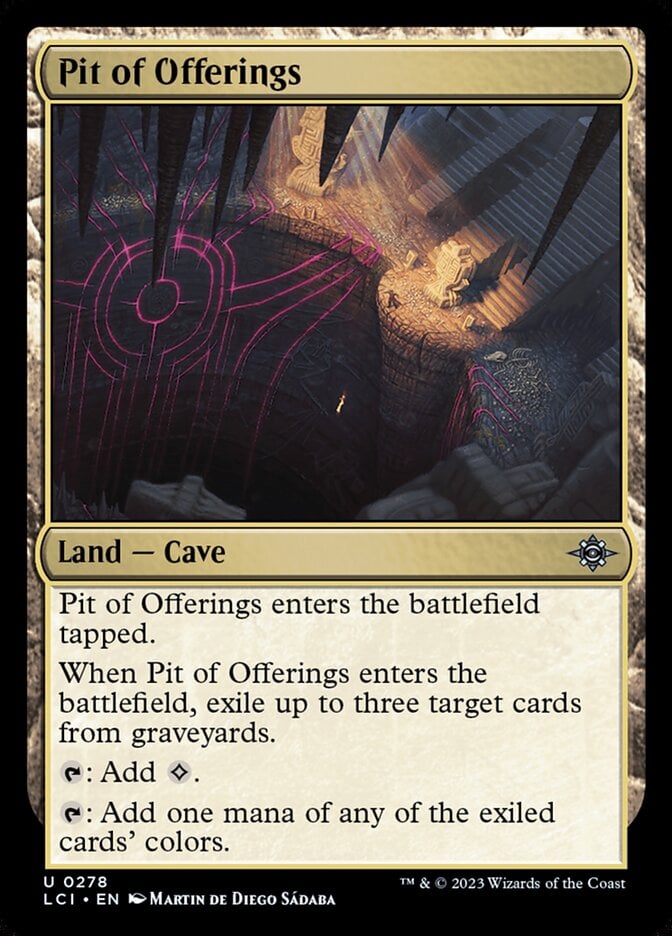
Pit of Offerings can do some mid-game color fixing, although you’ll need ways to get your and/or your opponents’ lands into graveyards to even make this worthwhile. In LCI Limited, where there’s quite a few descend cards and other graveyard matters cards, your opponent may do your work for you. In other formats, if you’re a mill deck, fine. If they’re a self-mill deck, even better. If you’re a land destruction deck… you get the picture.
Tecutlan, the Searing Rift lets you discover whenever you use it to cast spells, although you need to descend a bunch of times with Brass's Tunnel-Grinder on the field first. I’ve got a few spots where I want to audition this, like a goblin or sacrifice deck.
Tarrian's Journal looks promising as a steady card draw option and sac outlet in black, but when your graveyard has more resources that your library, you can flip it into The Tomb of Aclazotz to start bringing your creatures back, although as vampires that have finality counters on them.
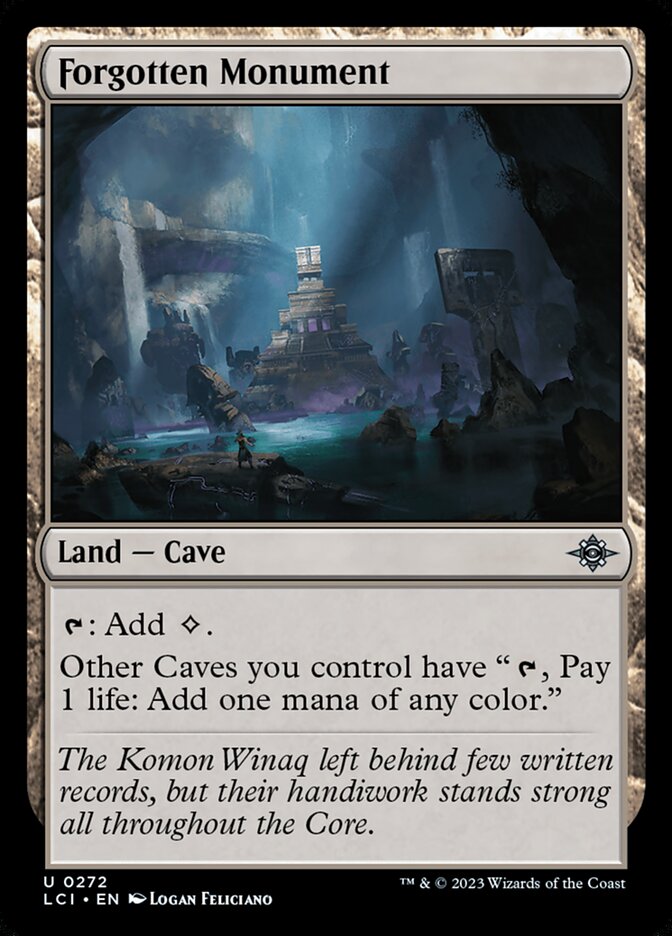
Forgotten Monument feels emblematic of the other caves-matter cards we’ve got with LCI. You’ll get more bang in any non-singleton format where you can stuff as many as four of each cave into your deck.
For caves-matter cards, Spelunking is one of the more impactful ones since it makes all your lands come in untapped. Glimpse the Core and Cosmium Confluence each have ways to grab you some caves, although the Confluence can also be a removal spell and a land animation spell.
Calamitous Cave-In can deal lots of damage around the board, while Compass Gnome and Scampering Surveyor can help to bring any cave from your library to your hand.
Return to Base Camp

Hidden Cataract | Illustration by Josu Solano
Caves are fascinating places to explore (with the proper etiquette and safety), and I think they make for an interesting land type. I like how this set feels like an expedition with the interactions between the different zones. Cards are moving all over the place, especially when you’re sacrificing caves to discover.
I wonder if and how we’ll see caves again. My gut tells me it’ll be like deserts, gates, and snow lands, where they return for very specific sets but are absent otherwise, but what do you think?
Thanks for coming along for our look at caves in Magic! Did you spot any hidden gems? Let me know in the comments below or over on our Discord server.
Stay safe, and stay hydrated!
Follow Draftsim for awesome articles and set updates:
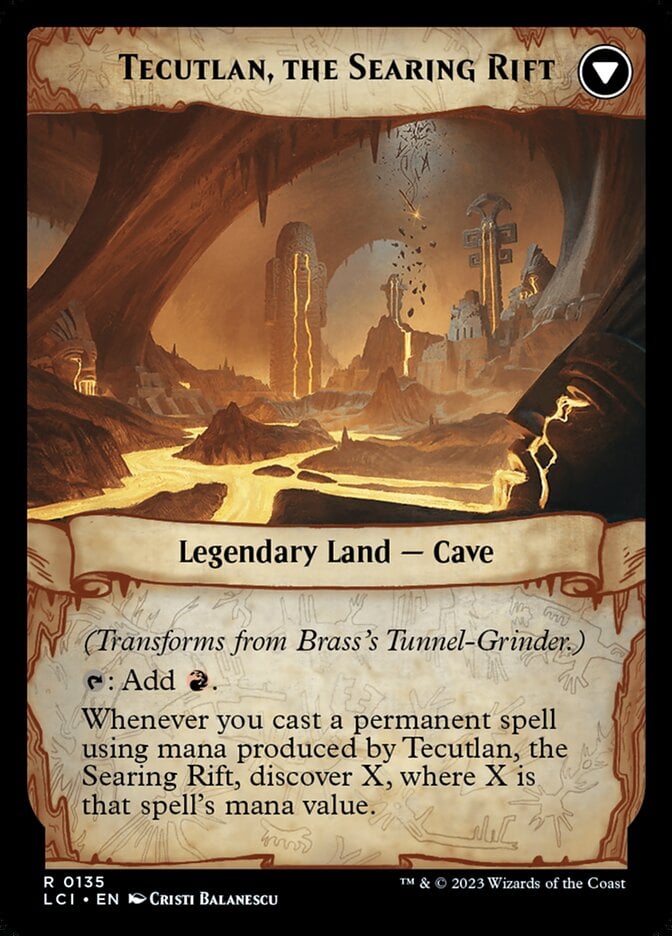
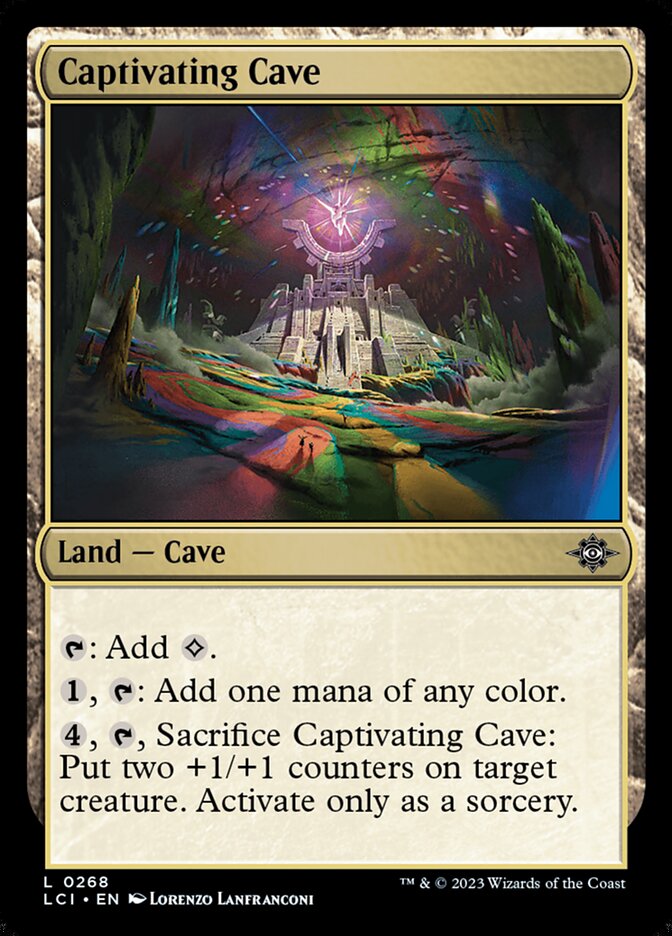
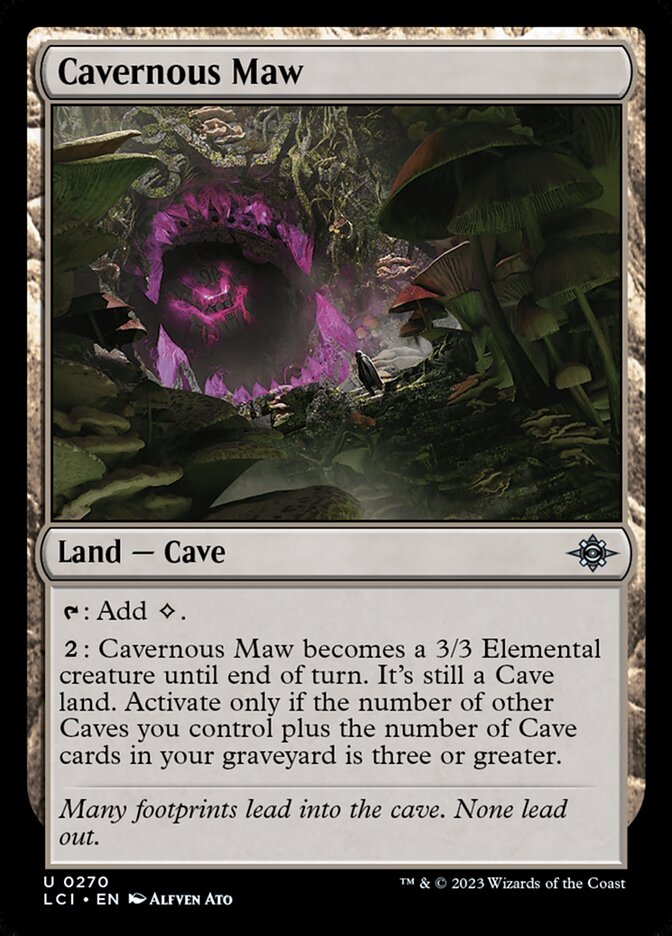
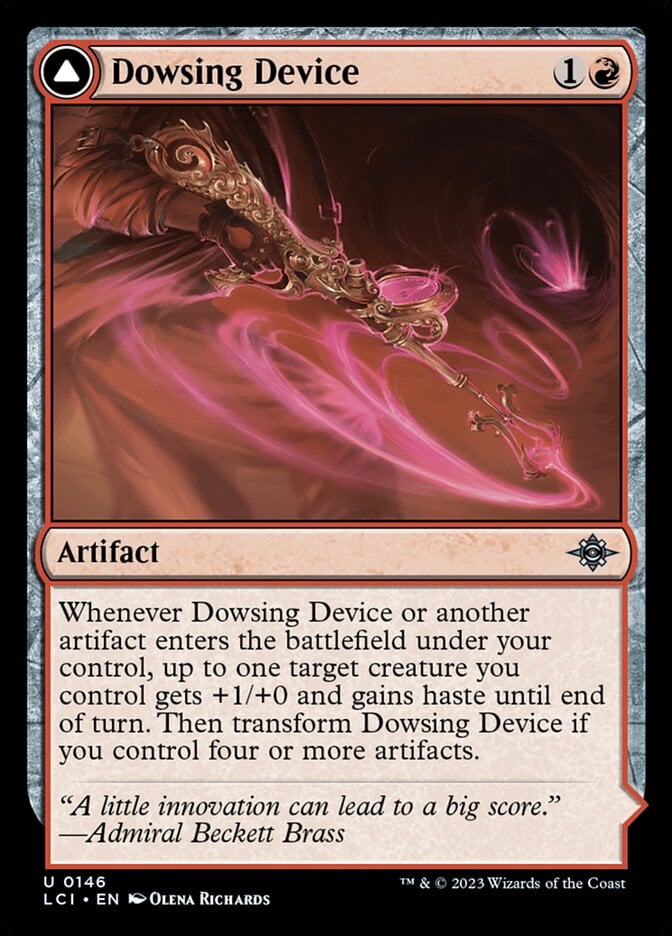

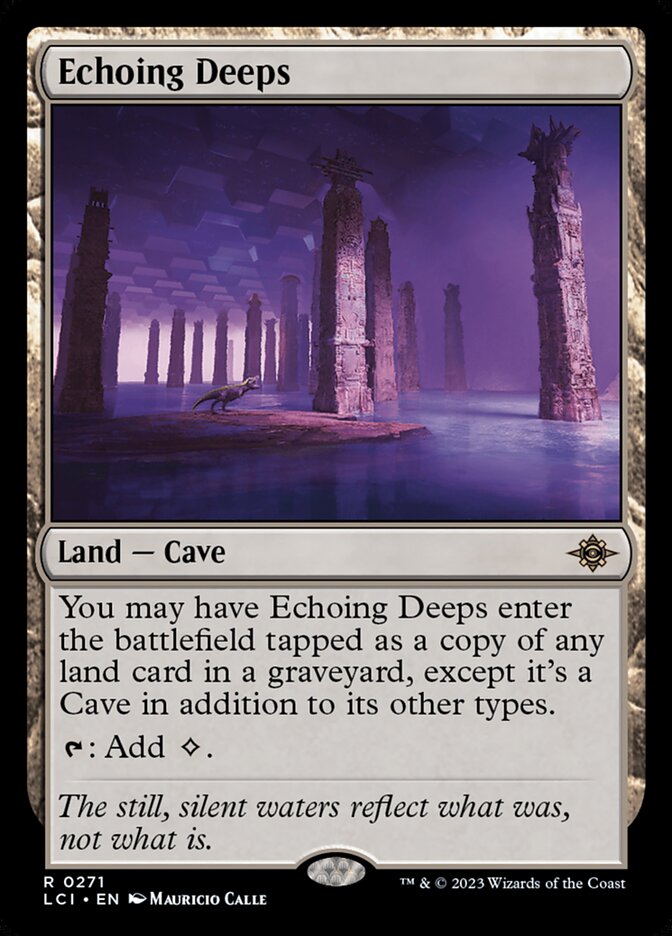
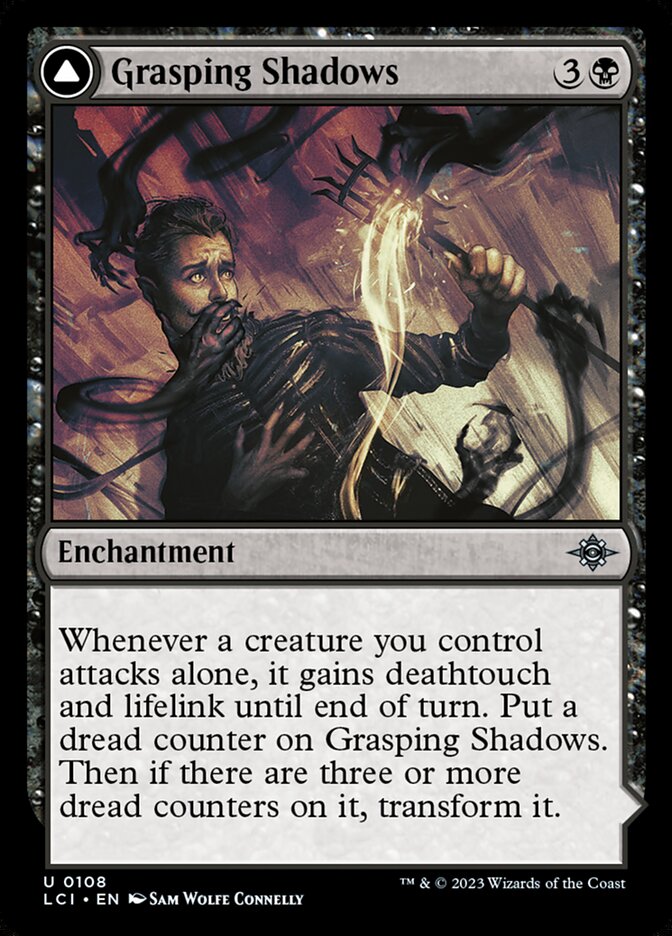




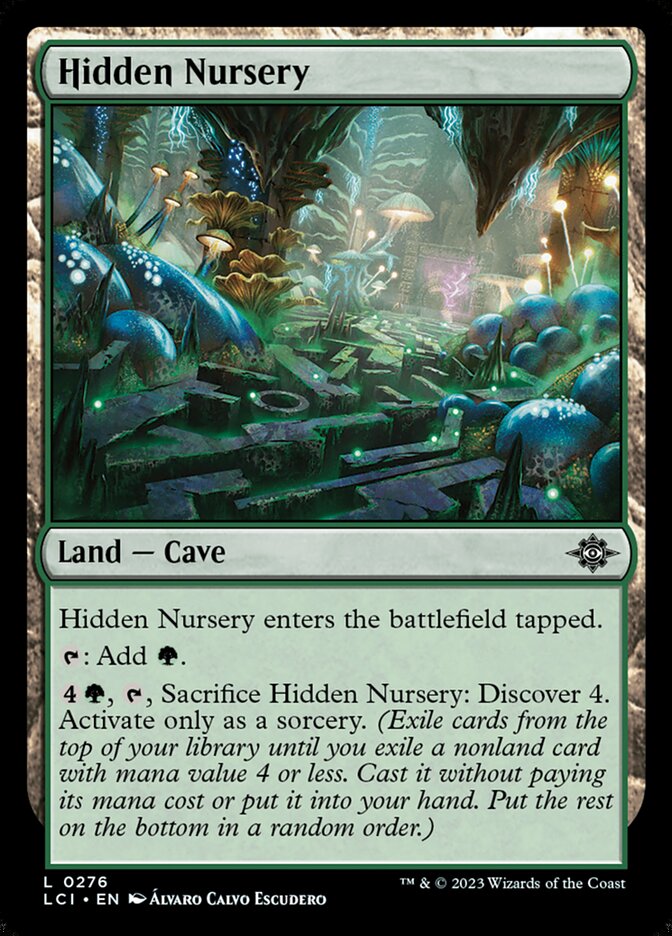
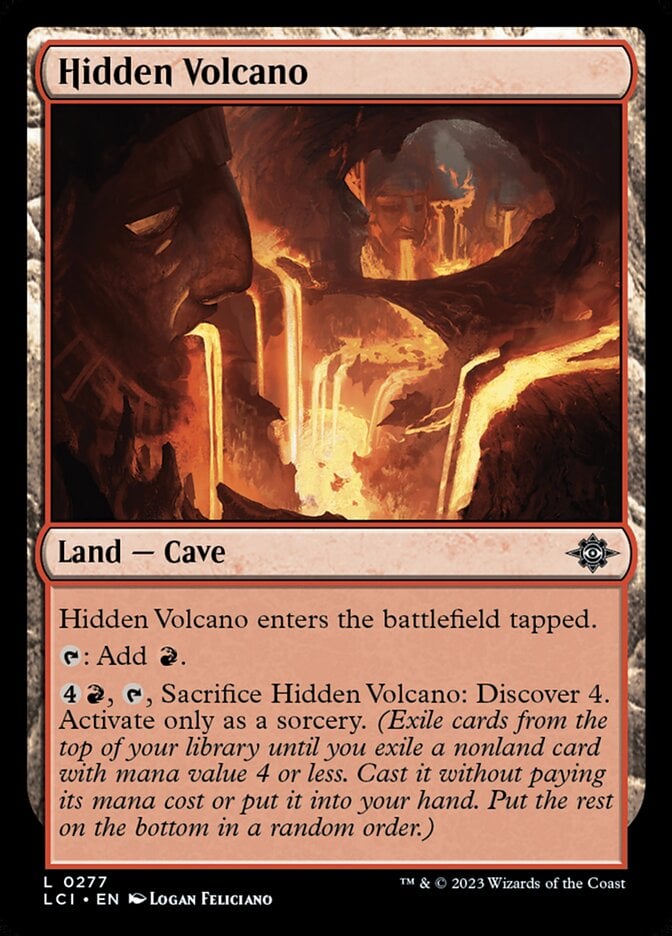

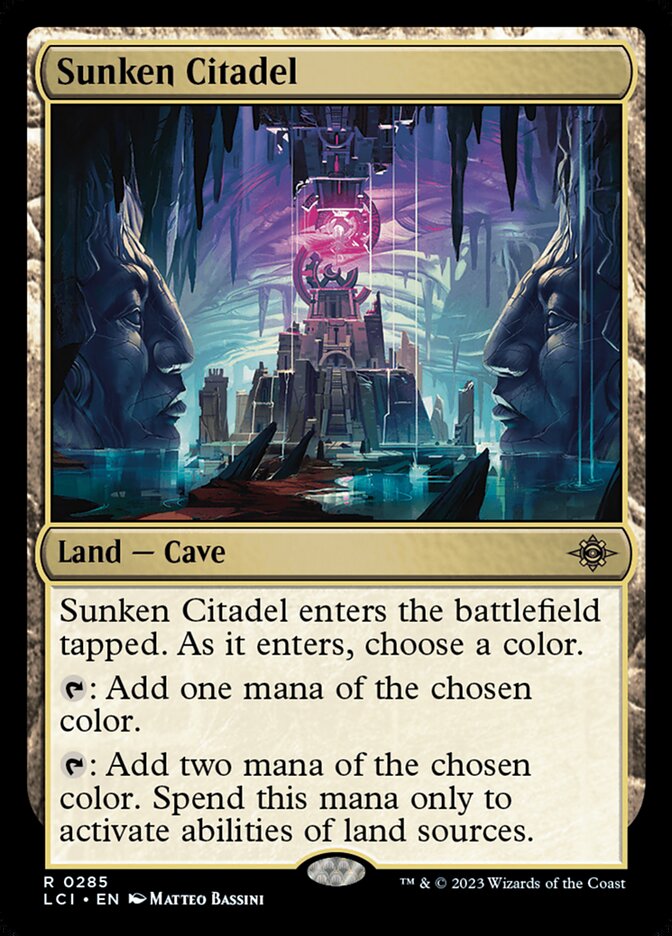


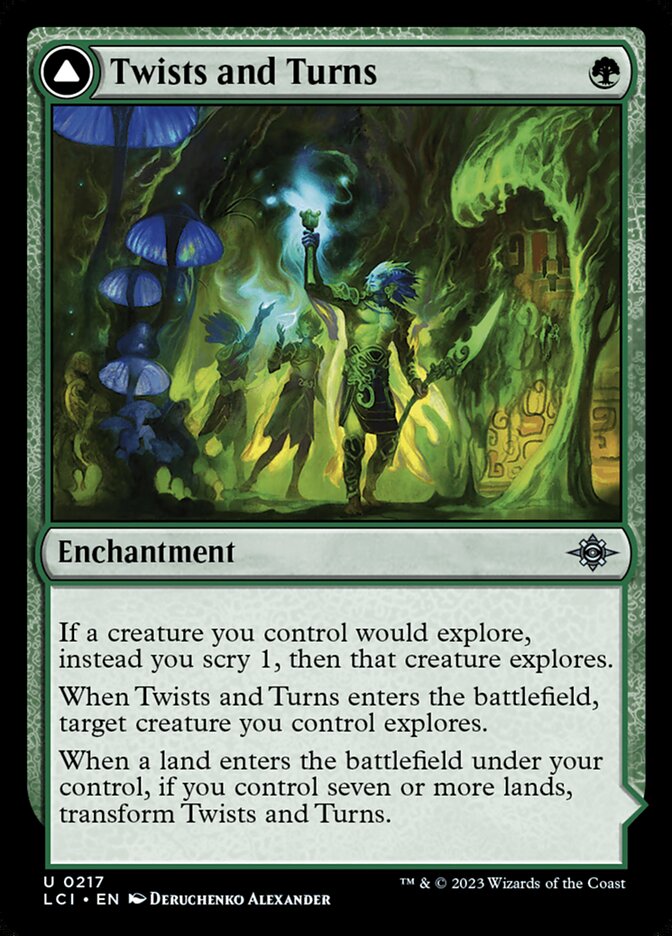

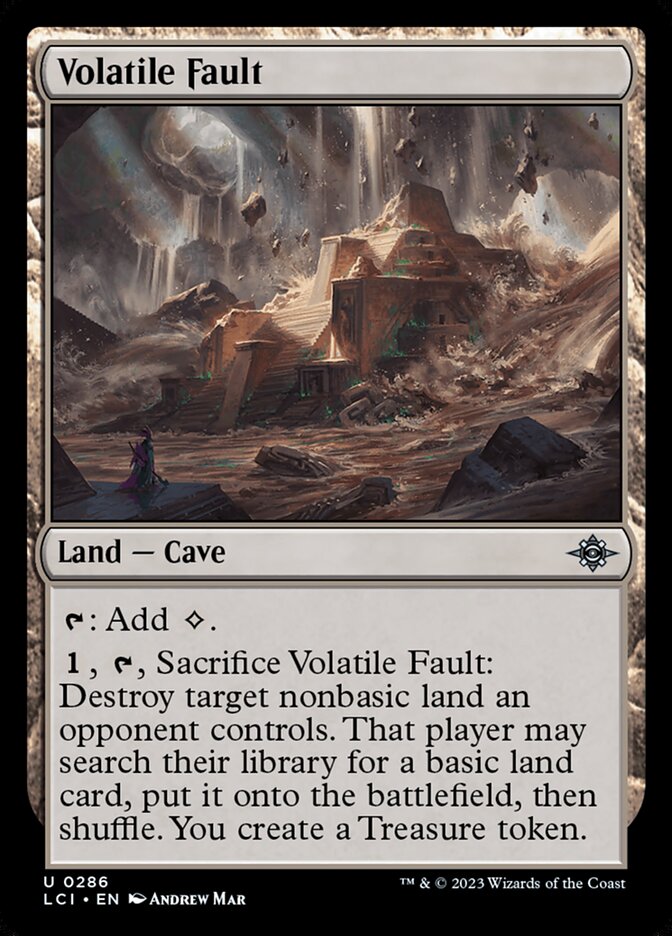
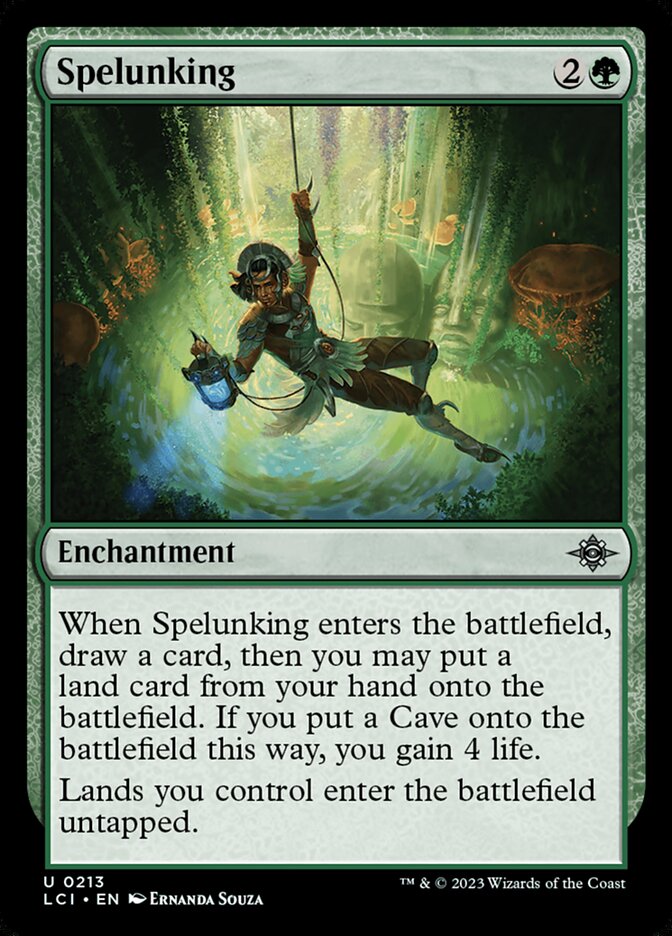
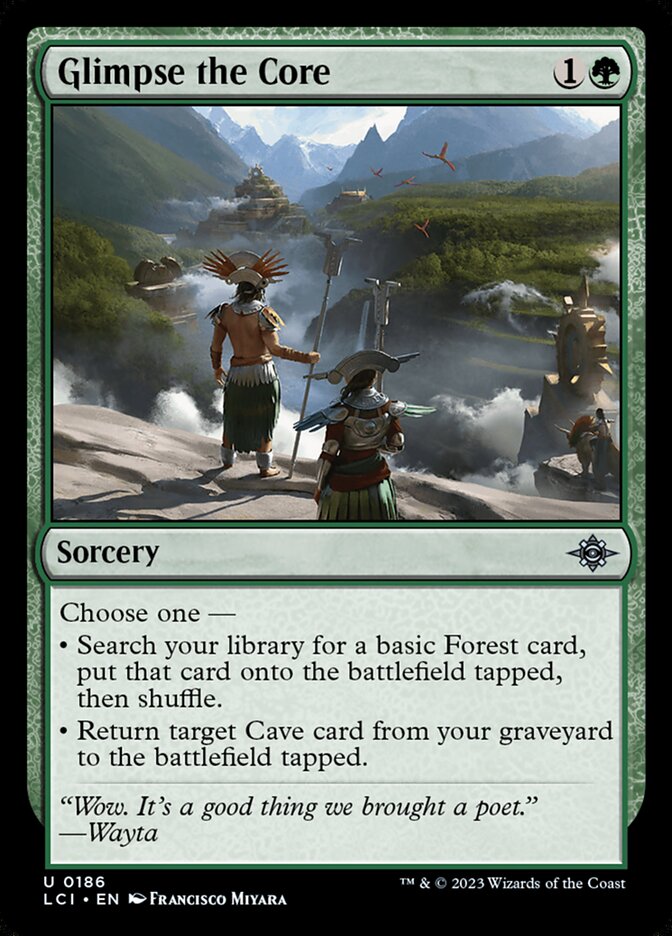
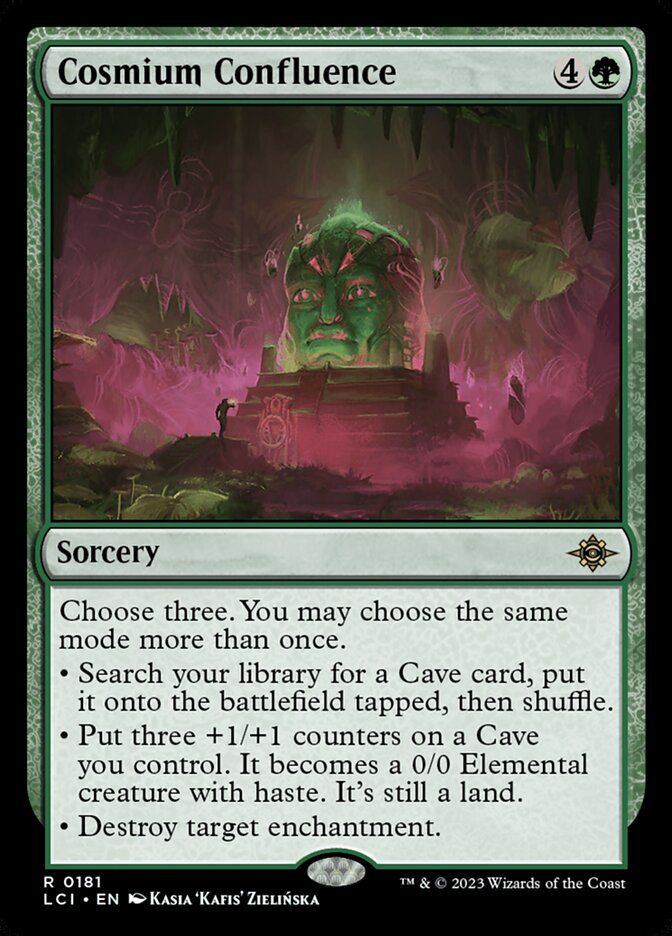
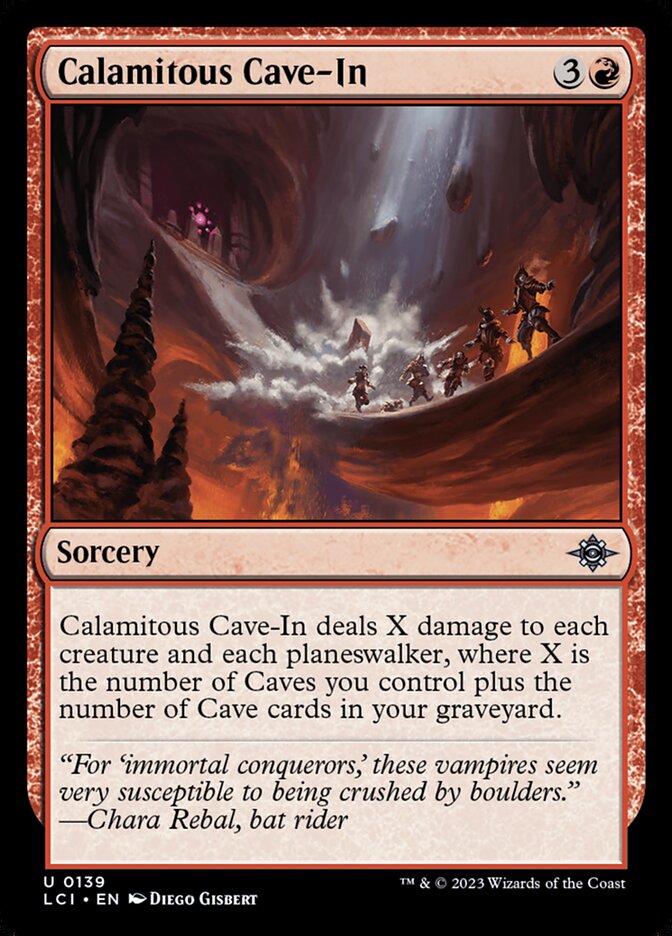
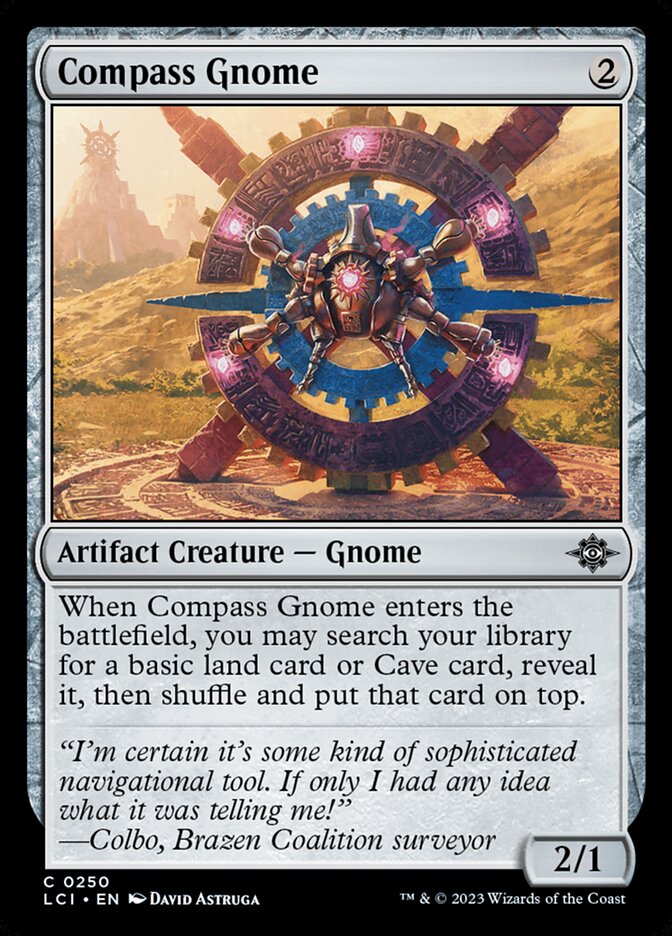
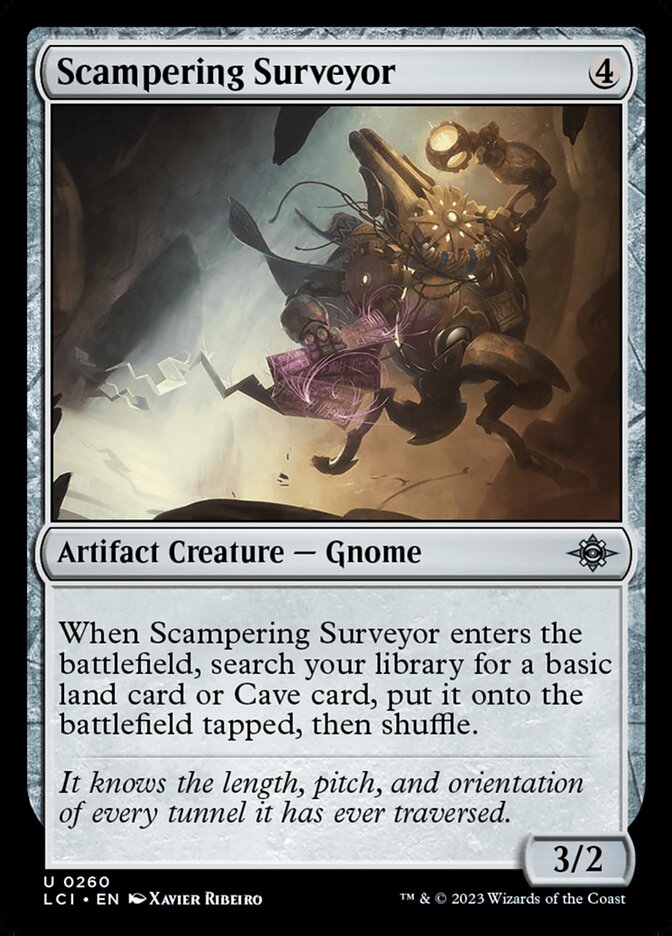


Add Comment